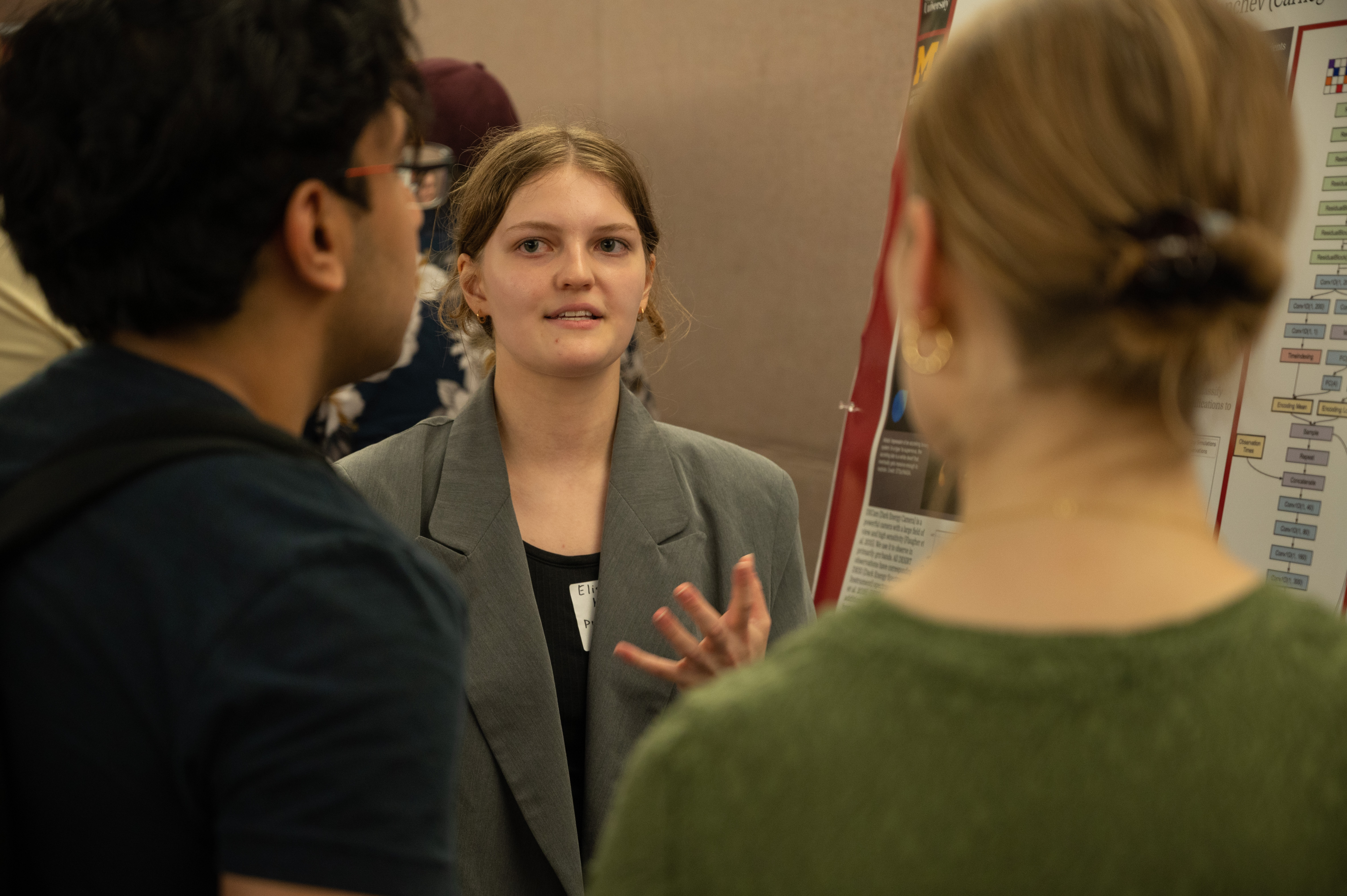AI Planning Institute Sponsors Summer Undergraduate Research
By Kirsten Heuring
Media Inquiries- Associate Dean for Communications, MCS
- 412-268-9982
Mulundano Machiya was on a path to graduate school. He knew he was heading in the right direction after participating in the Artificial Intelligence and Physics Summer Undergraduate Research Program (SURP) hosted by the National Sciences Foundation AI Planning Institute for Data-Driven Discovery in Physics at Carnegie Mellon University.
"The program caught my attention because of how they use AI and physics together," said Machiya, a rising junior studying physics at Xavier University of Louisiana. "I already wanted to get my Ph.D. in physics, but I had never thought about the lifestyle of research, or the shape of research or what it would look like. And one of the most exciting things was seeing how active researchers do their work."
Machiya was one of several students who participated in SURP and the Summer Scholars Program (SSP). Hy Trac, associate professor of physics and coordinator of SURP, said the program offers research and network building opportunities to students from a myriad of backgrounds.
"A major goal of these summer programs is to promote and improve diversity in physics and astronomy," Trac said. "We encouraged students from underrepresented groups to apply. I was once a first-generation student and understand that it is important to have opportunities and to make the most of your opportunities."
Machiya worked with Michael Widom, professor of physics, to help simulate the ground state of Rydberg atom arrays using neural networks. A Rydberg atom exists when an atom is excited with at least one electron that has a high quantum number, meaning that electron is far from the nucleus of the atom. When a series of these atoms are lined up, they form an array of varying shapes.
Machiya said SURP's flexibility allowed him to work on quantum physics and quantum computation, something he was interested in pursuing, even that though the project wasn't on the initial list of options.
"I ended up assigned with Michael Widom, and he has been doing work with the Pittsburgh Supercomputing Center," Machiya said. "He had work going in this direction, and the project came about because the applications are directly quantum computational."
Elise Kesler, a rising senior studying physics and astronomy at the University of Michigan, had been participating in research at her home institution related to the Dark Energy Survey. She saw the potential in Carnegie Mellon's program to expand her skillset.
"I have some ideas for how maybe I could translate the AI aspect into some of the things I'm doing at home," Kesler said.
Kesler worked with Antonella Palmese's group, programming a neural network known as parametrization of supernova intrinsic properties (ParSNIP). The algorithm is meant to identify transients, astrophysical phenomena that last for a short period of time. With the help of Palmese and post-doc Konstantin Malanchev, Kesler trained ParSNIP to identify transients that register on the Dark Energy Camera, a 570-megapixel camera on the 4-meter Blanco telescope at the Cerro Tololo Inter-American Observatory in Chile, a division of the NSF's NOIRLab.
Kesler said that though the time they had over the summer was limited, she was proud of what she accomplished.
"It took me a little bit to understand a lot of the terms and to figure out what was going on in each step. I had to spend a lot of time parsing the code, looking at it and trying to learn what each chunk of code meant," Kesler said. "I ended up with a pretty good model."
 Elise Kesler spent the summer programming a neural network known as parametrization of supernova intrinsic properties. She presented her work at the SSP poster session.
Elise Kesler spent the summer programming a neural network known as parametrization of supernova intrinsic properties. She presented her work at the SSP poster session.
Francisca Stedman, a rising sophomore in physics at Carnegie Mellon, was looking for her first research opportunity when she heard about SSP.
"It was definitely a lot to learn," Stedman said. "I would have to ask my professor a lot of questions, and they kept on trying to test my knowledge until I understood what was going on."
Stedman assisted with biophysics research into antimicrobial peptides. Currently, bacteria are becoming resistant to antibiotics, so researchers are trying to find a solution. Antimicrobial peptides are meant to break apart the lipid membrane on bacteria, killing the bacteria. Since these peptides directly target the membrane, bacteria are less likely to create defense mechanisms for them.
Stedman assisted with analyzing X-ray scattering data that the lab had gathered previously. This data helped show how lipid membranes were affected by antimicrobial peptides.
"It was definitely interesting to be doing something that could have a real-life impact," Stedman said. "I feel like I could see myself doing more research in the future."